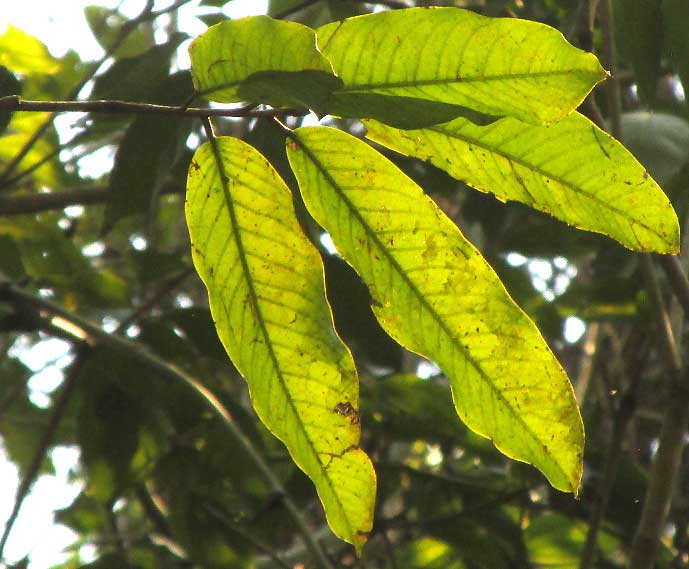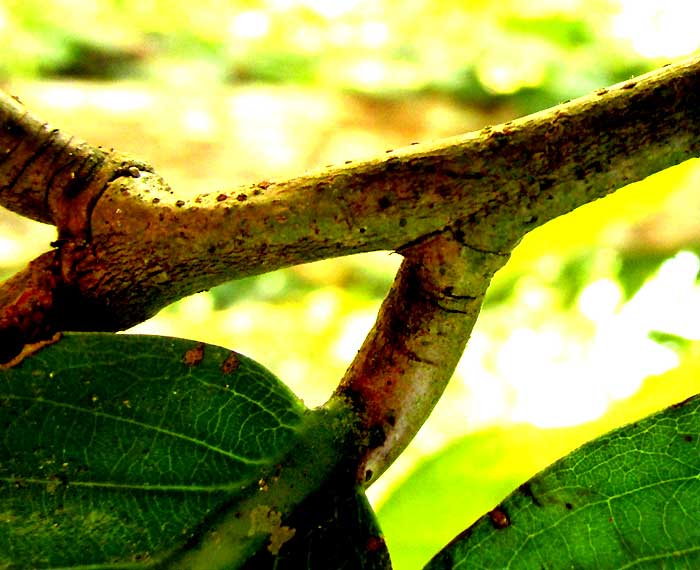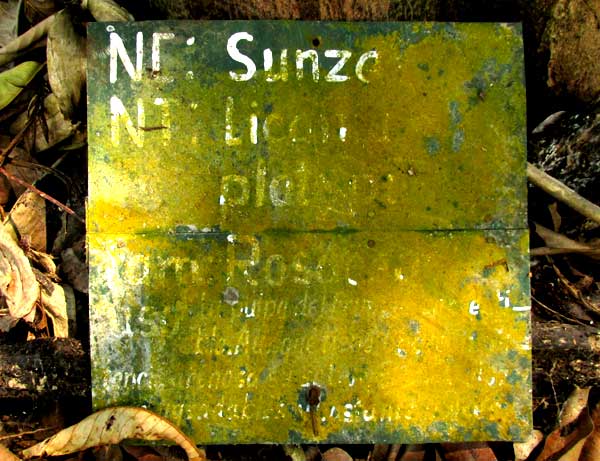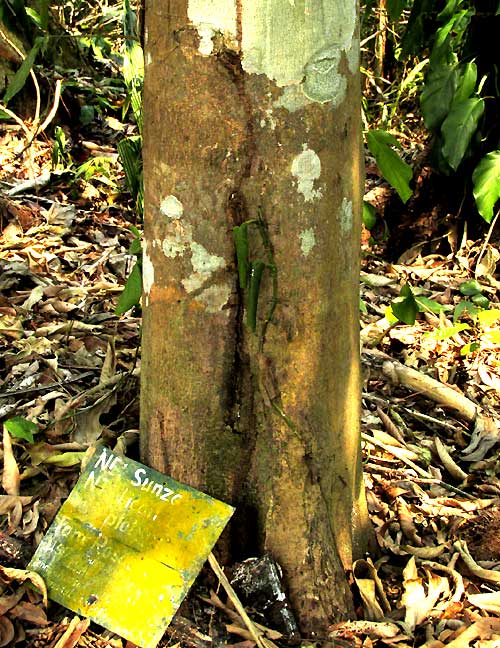Excerpts from Jim Conrad's
Naturalist Newsletter
Entry from notes taken during a March 30, 2019 camping trip to El Rosario National Park, Petén department; about 125m, (410 ft), ~N16.525°, ~W90.160°; GUATEMALA
SANSAPOTE

In the campground of El Rosario National Park, on the west side of Sayaxché, Petén, some of the larger trees are labeled. This has been a great help to me because often flowers and fruits of these larger trees escape my attention, because they're so high in the canopy, and I've never been able to identify them when I saw them. That's been the case with the tree whose leaves are shown above.
Those leaves were quite high up, but the telephoto lens shows clearly shows their narrow shapes, the many secondary veins forming a "herringbone pattern," and how the leaves cluster toward branch tips. Fortunately, a storm the previous day had knocked a small branch onto the ground,and I was able to see how the leaves' short petioles were rounded in cross section, unlike the petioles of most leaves, as shown below:

The tree's identification sign was so covered with algae that the name could hardly be deciphered, as seen below:

I could make out Lican... platy.... I'd heard of the genus Licania; there's a LICANIA PLATYPUS*, and a search for pictures of that species' leaves on the Internet showed that they looked exactly like ours. Also, that species often is known variously as Sanzapote, Sansapote and Sunsapote, so the sign's "Sunza...." was shooting in the right direction. That's comforting, because the sign identifying the tree was only propped against its massive, well formed, slightly buttressed trunk, as shown below:

Licania platypus also has some English names -- Monkey Apple, Gopher Apple -- but most pages dealing with the species use the Spanish Sansapote. An appeal of that name is that it incorporates the word sapote, which is applied to various delicious tropical tree-fruits. However, true sapotes belong to the Sapodilla Family, while the Sansapote is a member of the Chrysolanus Family, the Chrysobalanaceae. That family is little known outside the tropics and subtropics. It's closely related to the Rose Family. Both the English names and the sapote part of the Spanish name refer to the tree's large, edible fruits, which one report saying that the flesh smells like fresh pumpkin, but is only occasionally eaten. The brown, egg-shaped fruits average about 15cm long (6inches). That Sansapote has edible fruits isn't a surprise because the only other member of this family I know is the coastal Icaco or Cocoplum bush, which produces a tasty fruit about the size of and shaped like an egg.
Sansapote occurs in dense forest from southern Mexico south through Central America into northern South America. It's a well formed tree that reaches up to 50m in height (164ft). It's wood is regarded as excellent for fine furniture, but it decays rapidly in contact with the soil.